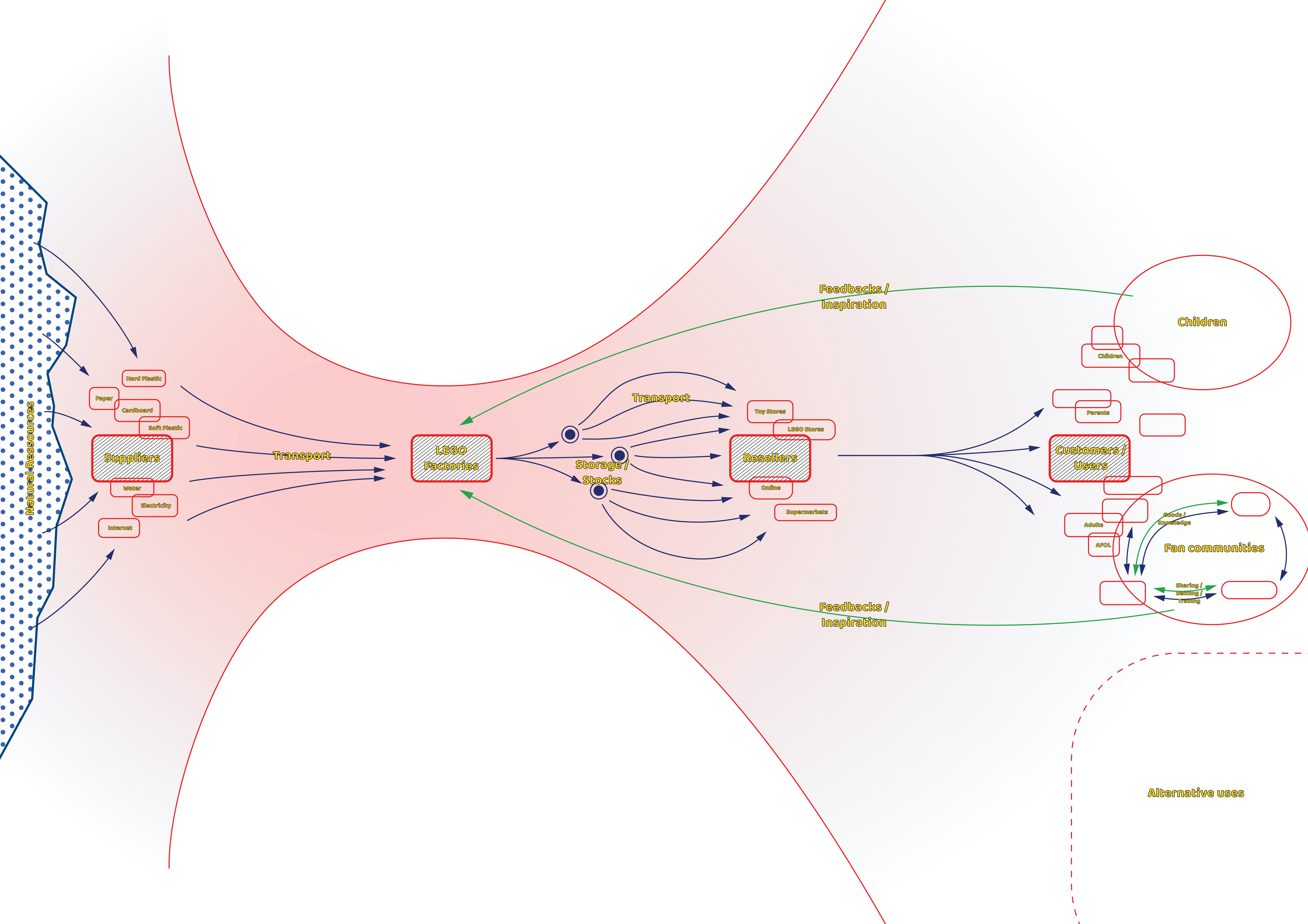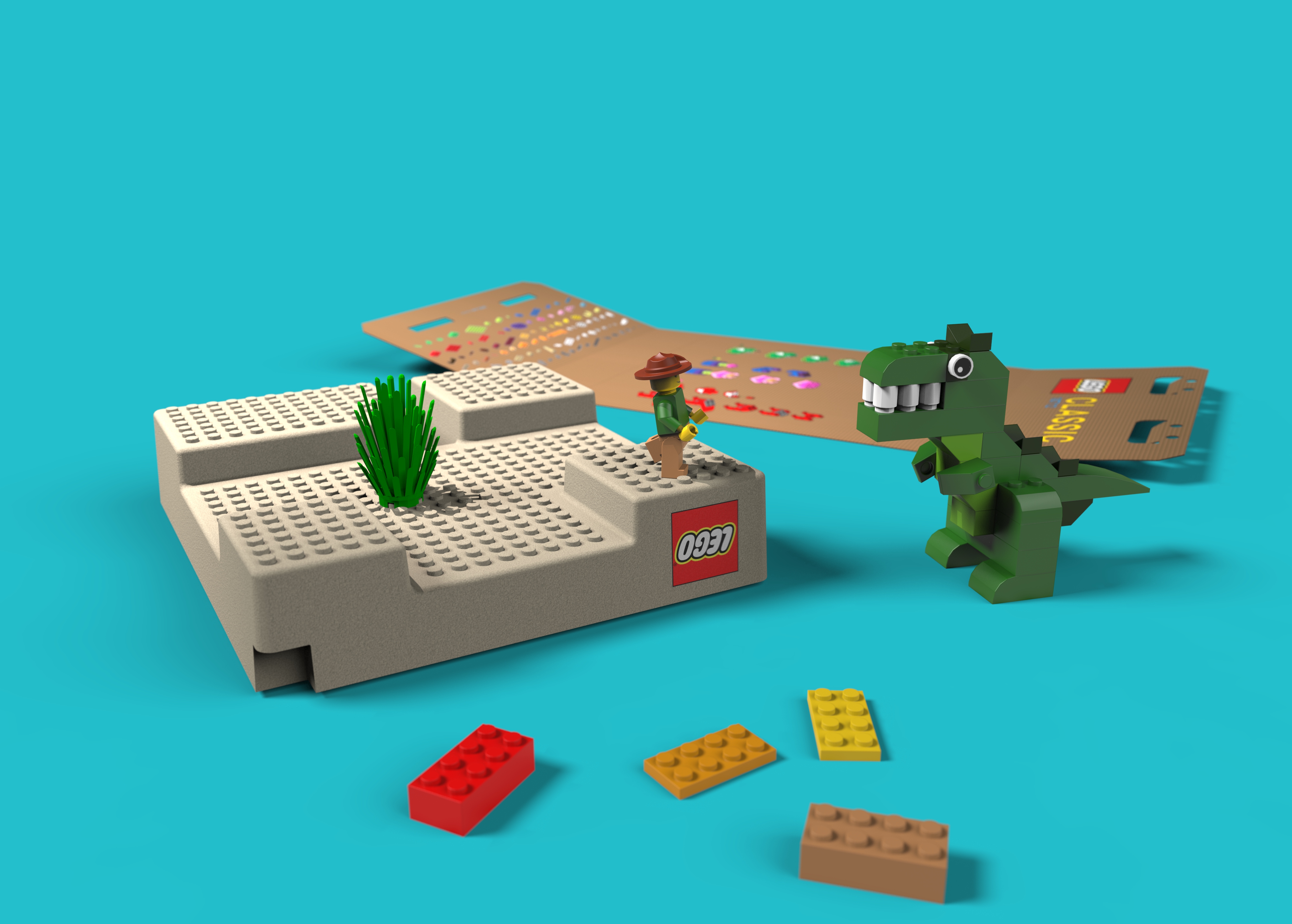SMART PACKAGING FOR LEGO: Reducing Waste and Enhancing Play Experience
Introduction
The objective of this project is to develop packaging solutions for LEGO that reduce waste and enhance the play experience. We aim to achieve this by designing packaging that is resealable, made from natural materials, and part of the play experience. Our project focuses on the entire lifecycle of the product, from resource to restored resource, to ensure that LEGO bricks can be easily shared, reused, and donated once they are no longer played with. We also aim to advocate and communicate responsible use and reuse of bricks to our target group, which includes parents, grandparents, and children.
Problem Statement
We aim to do more and better with less throughout the entire lifecycle of a product, from resource to restored resource. Specifically, we want to make sure LEGO bricks can be easily shared, reused, or donated once they are no longer played with. Additionally, we aim to ensure LEGO bricks can be collected, updated, upcycled, and recycled. We want to engage our target group through advocating and communicating responsible use and reuse of bricks, and designing fun and easy ways to share, reuse, or donate bricks.
Purpose
Our project has several purposes, including a professional incentive, personal motivation, and customer value. We want our customers to feel good about using our product and packaging, and we want to use packaging to enhance the play experience. Our project also presents opportunities for fewer transportation needs, marketing LEGO as smarter and better, and added value for the company/product. We anticipate that the toy industry may eventually copy our packaging design innovations.
Goal
Our goal is to design packaging that is smarter and uses less plastic and waste. We want our packaging to be resealable, made from natural materials, and part of the play experience. Additionally, we aim to make our packaging as small as possible, less exuberant, and stackable for better transport use. We want to visually communicate messages in a new way, possibly through color coding, and consider space perception when downsizing our packaging. We also want to question the way LEGO bricks are sold, and change the shop experience to make it easier for customers to store bricks.
Method
We plan to achieve our goal by asking questions, conducting research, and using practical knowledge and experience. We will consider core concepts such as the perception of size, storage purpose, and the experience of interacting with the box. We will explore opportunities to use bamboo or other materials, reuse discarded materials from another industry, and design a return/collect system. We will also assess the current reaction to LEGO packaging and consider ways to improve the unboxing experience, such as decreasing image size on instructions and providing better organization of parts.
Conclusion
Our project is focused on designing packaging that is smarter and uses less plastic and waste for LEGO. By reducing waste and enhancing the play experience, we aim to create a product that customers feel good about using and that adds value for the company/product. Through our innovations in packaging design, we anticipate that the toy industry may eventually copy our methods, presenting further opportunities for reducing waste and enhancing play experiences.
The objective of this project is to develop packaging solutions for LEGO that reduce waste and enhance the play experience. We aim to achieve this by designing packaging that is resealable, made from natural materials, and part of the play experience. Our project focuses on the entire lifecycle of the product, from resource to restored resource, to ensure that LEGO bricks can be easily shared, reused, and donated once they are no longer played with. We also aim to advocate and communicate responsible use and reuse of bricks to our target group, which includes parents, grandparents, and children.
Problem Statement
We aim to do more and better with less throughout the entire lifecycle of a product, from resource to restored resource. Specifically, we want to make sure LEGO bricks can be easily shared, reused, or donated once they are no longer played with. Additionally, we aim to ensure LEGO bricks can be collected, updated, upcycled, and recycled. We want to engage our target group through advocating and communicating responsible use and reuse of bricks, and designing fun and easy ways to share, reuse, or donate bricks.
Purpose
Our project has several purposes, including a professional incentive, personal motivation, and customer value. We want our customers to feel good about using our product and packaging, and we want to use packaging to enhance the play experience. Our project also presents opportunities for fewer transportation needs, marketing LEGO as smarter and better, and added value for the company/product. We anticipate that the toy industry may eventually copy our packaging design innovations.
Goal
Our goal is to design packaging that is smarter and uses less plastic and waste. We want our packaging to be resealable, made from natural materials, and part of the play experience. Additionally, we aim to make our packaging as small as possible, less exuberant, and stackable for better transport use. We want to visually communicate messages in a new way, possibly through color coding, and consider space perception when downsizing our packaging. We also want to question the way LEGO bricks are sold, and change the shop experience to make it easier for customers to store bricks.
Method
We plan to achieve our goal by asking questions, conducting research, and using practical knowledge and experience. We will consider core concepts such as the perception of size, storage purpose, and the experience of interacting with the box. We will explore opportunities to use bamboo or other materials, reuse discarded materials from another industry, and design a return/collect system. We will also assess the current reaction to LEGO packaging and consider ways to improve the unboxing experience, such as decreasing image size on instructions and providing better organization of parts.
Conclusion
Our project is focused on designing packaging that is smarter and uses less plastic and waste for LEGO. By reducing waste and enhancing the play experience, we aim to create a product that customers feel good about using and that adds value for the company/product. Through our innovations in packaging design, we anticipate that the toy industry may eventually copy our methods, presenting further opportunities for reducing waste and enhancing play experiences.




